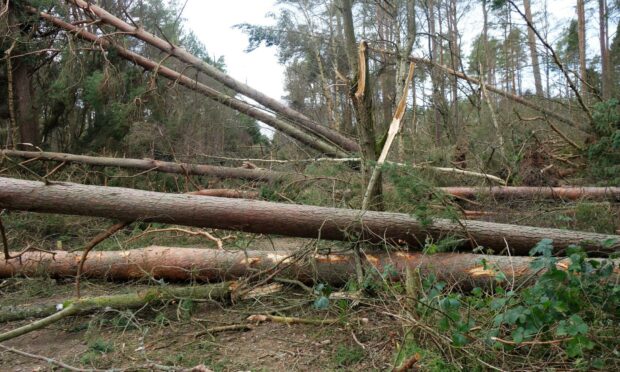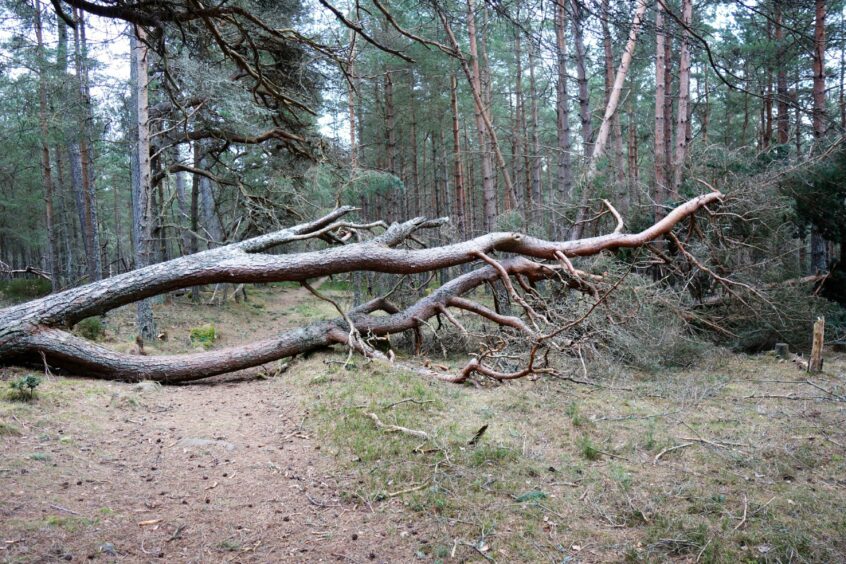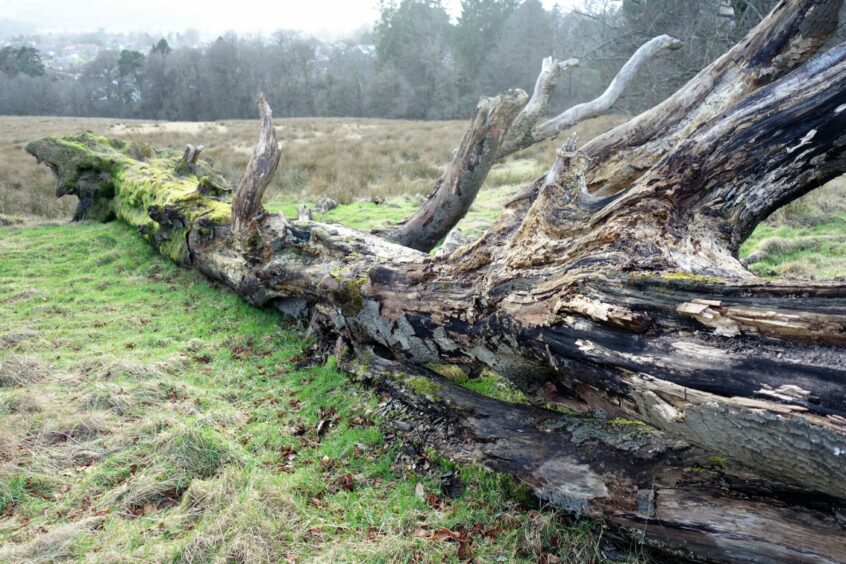Whilst it has been an unusually mild winter, it was also an extremely windy one, and the full impact of the havoc wreaked by a succession of storms was brought home to me the other week when driving through the Howe o’ the Mearns.
It was in the aftermath of Storm Corrie, which itself had been preceded by Storms Malik and Arwen, and as I drove from Cairn o’ Mount, past Fettercairn and down towards Luthermuir, there were tumbled trees everywhere, some of them mighty oaks and beeches.
Huge branches had been torn asunder and trunks split, leaving gaping wounds and cavernous cracks, while woody debris lay scattered across fields and hedgerows like tidal flotsam.
On passing the forestry plantation at Inglismaldie woods, the damage was particularly severe.
It was both shocking and humbling, a stark reminder of the power of nature.
Remembering past storms
Colin Gibson, The Courier’s renowned nature diarist, recounted the turmoil caused by a storm in January 1953.
He wrote: “The north wind came down like a wolf on the fold, and was at its most ferocious at noon, raging through Tayside and the whole north-east of Scotland.
“In Perth it ‘yowled up frae the vennel’d toun’, in Dundee it roared over Balgay and the Law, and hurtled debris from the rooftops into the city streets.”
For commercial foresters the damage cause by such storms is devastating, but for nature it is often a different story, for storm-felled trees bring new opportunity.
Wild storms have been felling trees since the dawn of time and it is all part of the natural cycle of regeneration.
The clearings created deliver dappled sunlight to the woodland floor that encourages wildflowers, which in turn attracts butterflies and numerous other invertebrates that themselves are preyed-upon by shrews, insect-eating birds, and bats.
The fallen seeds of trees can now germinate and grow in these sunny open places, completing the continuous circle of natural regeneration and delivering new vitality to the woodland.
Deadwood
Inside a decaying tree trunk there is a wonderful diversity of life.
Peel apart the soft and crumbling bark, and a myriad of tunnels are revealed, which have been created by thriving populations of specialised invertebrates.
On the surface of the trunk are intricate tiny cup-shaped lichens, fungi and many mosses, along with the bullet-mark indentations caused by foraging woodpeckers.
It is not all positive, and severe storms in early spring and summer cause immense problems to tree-nesting birds, such as ospreys.
And, of course, there are wildlife communities that depend upon living trees, such as caterpillars and the songbirds that feed upon them.
However, seldom is a whole woodland felled by a storm, and it is this mosaic of tumbled and living trees, which creates such wonderful diversity.
Near my home lies a long-tumbled, wood-rotted oak, which in autumn becomes adorned with colourful fungi, including lemon disco and velvet shank.
Exploring every nook and cranny is a special experience, for the death of this oak has created a plethora of new life that is a sheer joy to behold.












